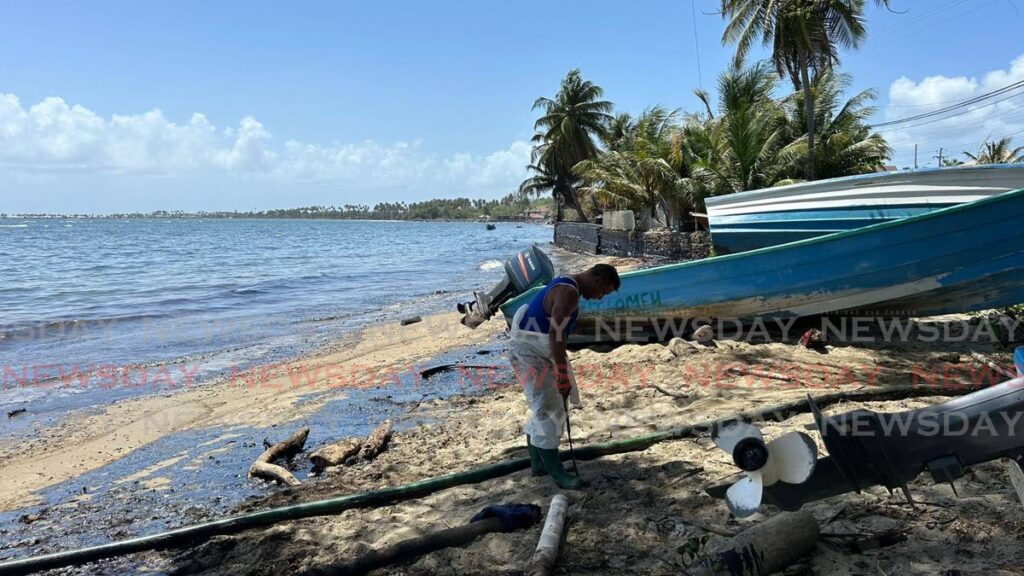Fishermen to present oil-spill loss report to Chief Secretary next week

THE ALL Tobago Fisherfolk Association (ATFA) is expected to present to THA Chief Secretary Farley Augustine by April 10, a detailed report of the losses incurred by fishermen owing to the effects of the oil spill.
The spill originated from a boat – the Gulfstream – that was found overturned in the sea some 200 metres off the coast of the Cove Eco industrial Park on February 7. Coastal regions along Tobago’s southwestern peninsula – including Kilgwyn Bay, Canoe Bay, Petit Trou Lagoon, Rockly Bay and Topaz Beach – were affected by the oil spill.
Several organisations and agencies are still engaged in cleaning up to eradicate the spill and rehabilitate the affected communities.
ATFA president Curtis Douglas reiterated on April 4 that fishermen were among the major casualties of the spill.
He said, “From the fisherman’s point of view, I will have to deliver, at least by Wednesday, a financial study and database of losses by fishermen.” Douglas said an ATFA team has been compiling the data.
He said the team had recorded “at least 12 boat engines that were damaged because of the hydrocarbon (bunker fuel). It corrupts the impeller, and the impeller stops the engine itself from overheating, and it damages the pistons and the block, so it mashes up the engine.”
He added, “My team is in the final stage of the investigation to submit those documents to the Chief Secretary. So they will have now an overview of what was the cost factor for the fisherfolk.”
Douglas said ATFA also has to submit a document outlining the financial impact of the oil on vendors and other downstream providers.
He said efforts by foreign-based company TT Salvage to contain the fuel from the Gulfstream and retrieve it from the water are ongoing.
“In a salvage operation, they (are) just looking to contain, retrieve and to move. They have the responsibility right now of pumping out those fuels and whatever else is inside of the boat.” But, Douglas said, “The only problem we face is that we don’t have enough, in my view, Tobagonians or fisherfolk on site directly to see what is going on so that we have a bird’s-eye view or an eagle’s-eye view of what it is. Because at the end of the day, we have to mind our business. “We need our people on the ground because it is in our zone and we have a right and a vested interest to not only see what is going on but also to learn from these operations because this is something that was not planned. “Tobagonians must be prepared for the unforeseen circumstance that we are experiencing right now in terms of the oil spill. “Today is an oil spill. Tomorrow could be a gas leak, and a gas leak is more devastating than an oil spill. With a gas leak, it kills everything in sight.”
On the oil-spill rehabilitation exercise generally, Douglas said improvements have been occurring incrementally.
A lot of improvements had been made, he said, “in terms of bringing back some form of stability in certain areas…When you look at the area around the ‘I Love Tobago’ sign (Scarborough) – remember the state that it was in? It was really impacted by the hydrocarbon. “But when you look at it now, you will find there is a bit more clarity around the sign.”
He said up until April 3 the boat was not leaking. “But what you find is that when the rain came down (over the Easter weekend), the bunker fuel that was in the mangroves was flushed out and it came back into the seas. So they (workers) are now trying to take it up.”


Comments
"Fishermen to present oil-spill loss report to Chief Secretary next week"